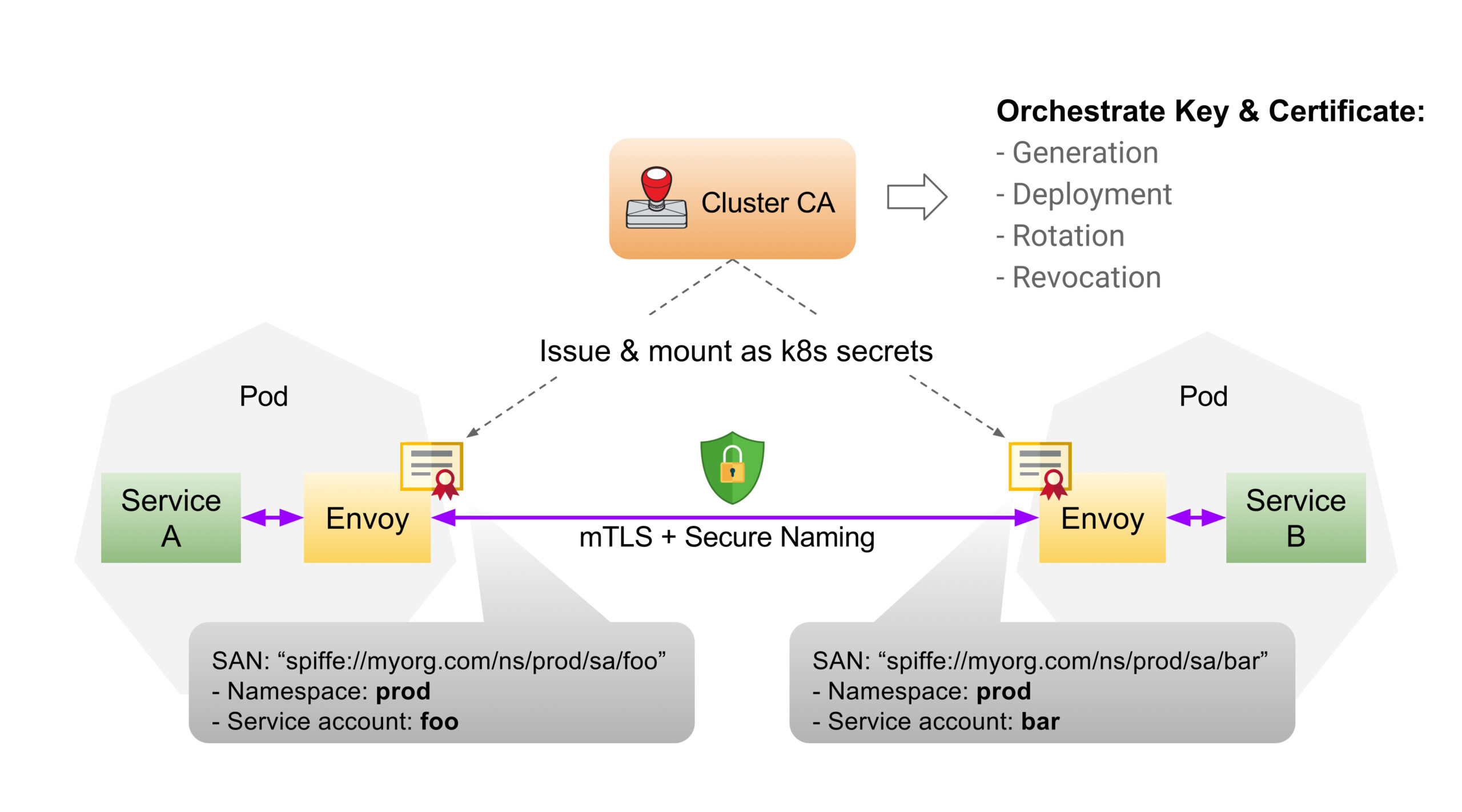Microservices architecture was not so long ago a topic only for the bravest and most advanced teams. It required courage to go into that rabbit hole and start putting the concept to life.
Today, the situation is slightly different, but only from the outside point of view. Companies are eager to adopt microservices principles as fast as possible because they see the huge potential this type of architecture can give them.
But they often forget that with great power comes great responsibility and that the architecture of such type needs really some wise decisions on the roadmap. This is miles away from the usual classical monolith architecture thinking. If the teams are not prepared for the challenges that microservices bring to the table, they might very well lose the fight already at the beginning.
Microservices Fundamentals
Microservice is an architectural component (a service in a nutshell) that organizes an application around a collection of fully independent services. Those services are small in their scope of work, and they communicate with each other via Application Programming Interface (API) calls.
In the context of cloud infrastructure, microservices are often used to build and deploy applications that are naturally scalable and flexible.
In the world of microservices, you design the application in such a way that each individual service performs a very specific function. This function must work all by itself and without any impact on other services.
For example, you can have one service for user authentification, another one for data storage of incoming files, or one for payment processing. These services you can develop, deploy, and scale independently of each other. As a side effect, this leads to much easier maintenance effort over time and easier updates to the existing services.
In cloud infrastructure, you want to deploy microservices using containerization technologies like Docker or Kubernetes. Containers provide a lightweight and portable way to package and deploy microservices. Kubernetes goes one step further by providing a whole platform for managing and orchestrating the deployment of these containers.
So microservices offer a number of benefits to your application in the cloud, and unless explicitly requested otherwise, nowadays, it should probably be your default architecture strategy. It aligns with parallel requirements for flexible developments, faster deployment to production, and less critical refactoring efforts over time. However, microservices require a bit more sophisticated approach to planning and management to ensure that the different services work together as they should.
Challenges of Microservice Architecture


Microservices architecture presents some challenges in terms of communication and security. Here are some of the most important of them.
#1. Communication Complexity
You need to orchestrate many different services to communicate with each other. This can lead to communication complexity of sorts. Every service you develop may have its own API and data format to accept.
The data formats then must become compatible between the services. Remember, you still want the services to work on their own without much dependency on other services. Trying to match the data formats can lead to the development of exactly that dependency.
#2. Service Discovery
In order for microservices to effectively communicate, they need to know each other’s location and API. Service discovery is the process of finding and connecting to other services in the system. This can be challenging in a changing environment where services are regularly added or removed.
#3. Data Consistency
Services may have their own database or data store, and those do not necessarily need to be the same. This can be a bit tricky to maintain data consistency across the system.
Updates to one service may not be immediately reflected in another service if the integration between the database systems is not done well. Resolving that kind of consistency challenge requires some advanced architectural decisions.
#4. Security
The more distinct services you have, the more cross-service communication will happen in the application. This, of course, creates opportunities for security vulnerabilities. It’s important to ensure that each service is properly authenticated and authorized to access other services and data.
#5. Distributed Tracing
Usually, it’s quite difficult to trace requests as they move through the system. Distributed tracing tools can help with that. They identify performance bottlenecks and troubleshoot issues, but they can also add complexity to the system.
Complexities in More Details
To go a bit more into the details of complexities, there are a few specific aspects of the cloud architecture to consider when designing the microservices.
#1. Network Latency
Every communication between services goes via a network, and the network can develop some latency. In turn, the speed of data exchange goes down, and the performance of the whole system goes down as well.
It can start on a really small scale, but those kinds of troubles have the potential to grow exponentially. It’s important to invest in monitoring tools and solutions that will actively alert the development team whenever the latency starts to grow.
#2. API Versioning
Ensuring long-lasting compatibility between the services brings a real complexity to the architecture design. There might be many APIs that belong to different services, and those might very well change over time.
Managing the API versioning shall, therefore, become one of the main processes for the development team. Requesting the team to follow the process is another challenge for the project leadership team.
#3. Error Handling


I would say that most of the time, there exists no such thing as a robust error handling and logging process on a project. The project’s leadership rarely sees a big value in such aspects of the project. That’s why the projects often greatly underestimate it. But the truth is that microservice architecture absolutely needs a robust error-handling process. Otherwise, good luck in tracing the problems that are generated in the middle of hundreds of microservices.
#4. Load Balancing
Most of your services will need to be load-balanced sooner or later. Distributing the traffic evenly across the services is a challenge on its own. However, the services might have different levels of traffic or resource requirements. That complicates it even further.
Next, load balancing requires service discovery, which is then basically a complication inside another one (as described above).
#5. Routing
There may be many different routes that traffic can take through the system. Routing services incorporation is not easy in the case of microservices architecture. It definitely requires to have a routing mechanism in place that can handle complex routing scenarios, for example, circuit breakers and retries.
Critical Aspects of Communication


Microservices communication contains some critical aspects that keep their distributed nature in place. Since they solve the issues in a decentralized way rather than centrally, a higher level of reliability is expected.
Reliability of the services is a key to preserving the data exchange you can rely on. Issues like network latency or failures are impacting this reliability. You shall design the system in such a way you can be sure the messages are delivered between the services.
Even if the messages are most of the time asynchronous (which means you don’t have a direct response from the target whether the message was really delivered).
Observability is another key aspect worth taking care of. Tracing the requests as they move through the system could be really difficult without some proper observability tools in place. They can help to identify performance bottlenecks and troubleshoot issues.
Finally, even if the system consists of thousands of microservices, it shall remain resilient to failures. This is easier to write than execute, but still, remember this aspect while designing the microservice architecture.
Introducing Istio


Istio is an open-source service mesh platform that provides a uniform way to connect and manage microservices. Its ultimate goal is to provide developers and users with a simple way to manage all the complexity of microservices communication that we talked about before. It also provides a large amount of features across different platforms.
Key Features of Istio
Here are some of the key features of Istio service that you can leverage in your application.
#1. Traffic Management
Istio provides a powerful traffic management system that is ready to use by developers to control the traffic flows between microservices. This includes features like load balancing, traffic routing, and fault injection.
#2. Security Capabilities
Istio contains out-of-the-box a comprehensive security system. This includes features like mutual TLS authentication and authorization. It also encrypts the traffic between microservices for you. And lastly, you can use features like rate limiting and access control to protect the application against external attacks.
#3. Observability
With Istio, you get a robust observability system that allows developers to monitor and troubleshoot microservices communication. This is exactly the monitoring part you need to resolve in a microservices architecture. It includes features like distributed tracing, metrics collection, and logging.
#4. Service Discovery
There is a service discovery system incorporated in Istio to support and enable microservices to discover and communicate with each other. You also get features like automatic service registration and DNS-based service discovery out of the box.
#5. Platform Support
Istio is designed to work with a wide range of platforms and languages, including Kubernetes, Docker, and Envoy. It also supports programming languages like Java, Go, and Python.
How Istio Helps with Microservices Communication?


Istio has several features specifically dedicated to resolving microservices communication.
Service discovery and load balancing is one of the most important features of support. It effectively enables the inter-communication between the microservices by giving them the discovery service to use.
The load balancing system then distributes all the traffic evenly across multiple instances of a service. This ensures that traffic is routed to healthy instances of a service (thus greatly reducing the latency and performance degradation of the whole system) and that the system can actually handle increasing traffic.
The request routing system of Istio is a powerful tool that allows developers to control traffic flow between microservices. This is where features like traffic routing based on HTTP headers and URL paths come into place. This system also supports more complex routing scenarios like circuit breakers or retries.
Another way Istio helps with communication is its traffic-shifting system that developers can use to gradually shift traffic from one version of a service to another. This is useful for testing new service versions in production environments without impacting users.
Fault injection is an important problem to solve in microservices architecture, and Istio has one fault injection system ready to use. Developers can simulate failures in the system in an automated way. This is useful for testing the resilience of the system and ensuring that it can recover from failures quickly.
Last but not least, Istio also includes a robust observability system. With that, developers can much easier monitor and troubleshoot microservices communication without the need to custom-build those features from scratch.
Services logging and metrics collection are done by Istio. The team can concentrate on the content part of the system instead of solving the mature logging features for the application. Istio, in addition, supports popular observability tools like Prometheus and Grafana.
Also read: How Microservices Architecture Works
Istio Case Studies
Just to finally prove how popular Istio service is, here are some real-world case studies and use cases where Istio has been successfully implemented to deal with communication and security challenges:
- eBay has implemented Istio to manage the communication and security of its microservices-based architecture. Istio deals with improvements to the reliability and observability of the eBay system, as well as with security features implementation like mutual TLS authentication and rate limiting.
- AutoTrader, which is a leading online marketplace for buying and selling cars, has implemented Istio into the microservices-based architecture. The main role of Istio here is very similar to the eBay use case. Reliability and scalability of the system are the key focus areas that Istio is covering. Autotrader also uses all of the security features and advantages that Istio has.
- Ticketmaster is a leading ticketing company, and it implemented Istio to manage the communication and security of its microservices architecture. Again, reliability, observability, and security are the key areas Istio covers here.
- F5 Networks, a provider of application delivery networking technology, uses Istio in its microservices architecture. The use case for Istio here is practically the same as for the use cases before.
These case studies and use cases demonstrate how effective the Istio service is when it comes to managing the communication and security of microservices architectures.
Final Words
Innovative or not, if you are lucky enough to present a functional version of microservices architecture in your portfolio, recognition of Innovator of the Year in the company is almost guaranteed. It’s a big step forward in architectural thinking and an even bigger step for the implementation teams to do it right.
Istio is one of the services that aim to make this transition much easier for the team. So why not use such an offered helping hand? There is a high chance that most of the concepts that Istio supports out of the box your development team won’t be able to replicate to the same level of quality. The rule of not reinventing the wheel fits here maybe a bit more than elsewhere seems.
Next, check out the best practices to secure microservices.
Si quiere puede hacernos una donación por el trabajo que hacemos, lo apreciaremos mucho.
Direcciones de Billetera:
- BTC: 14xsuQRtT3Abek4zgDWZxJXs9VRdwxyPUS
- USDT: TQmV9FyrcpeaZMro3M1yeEHnNjv7xKZDNe
- BNB: 0x2fdb9034507b6d505d351a6f59d877040d0edb0f
- DOGE: D5SZesmFQGYVkE5trYYLF8hNPBgXgYcmrx
También puede seguirnos en nuestras Redes sociales para mantenerse al tanto de los últimos post de la web:
- Telegram
Disclaimer: En Cryptoshitcompra.com no nos hacemos responsables de ninguna inversión de ningún visitante, nosotros simplemente damos información sobre Tokens, juegos NFT y criptomonedas, no recomendamos inversiones


